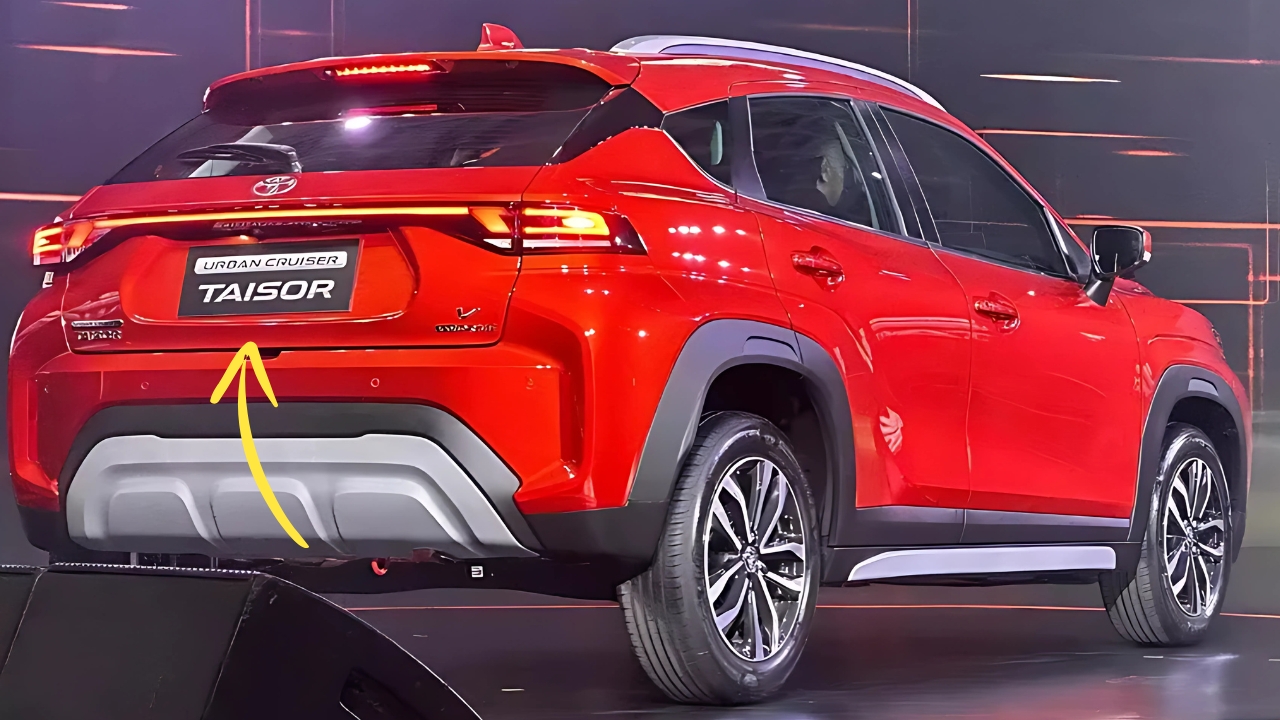Toyota Taisor : In the fiercely competitive Indian automotive landscape, where compact SUVs reign supreme, Toyota has made a strategic move with the introduction of the Taisor.
This latest entrant in Toyota’s Indian lineup represents the company’s renewed focus on capturing a larger slice of the sub-4-meter SUV segment—a category that has seen explosive growth over the past decade.
Toyota Taisor : The Birth of a Cross-Badged Contender
The Toyota Taisor emerges from the successful partnership between Toyota and Maruti Suzuki, representing the fifth shared product between these automotive giants.
Following the footsteps of the Urban Cruiser Hyryder, Glanza, Rumion, and Urban Cruiser, the Taisor is essentially Toyota’s rendition of the popular Maruti Suzuki Fronx.
This badge-engineering strategy has allowed Toyota to rapidly expand its portfolio in segments where it previously lacked presence.
For consumers, this translates to Toyota’s renowned service experience and reliability reputation, wrapped around a product that has already proven its mettle in the market.
Distinctive Design Philosophy
Despite sharing its underpinnings with the Fronx, Toyota has worked diligently to give the Taisor its own visual identity.
The front fascia features a bold hexagonal grille with a distinctive mesh pattern, flanked by sharp LED headlamps that incorporate sleek daytime running lights.
The bumper design, with its angular fog lamp housings and silver skid plate, conveys a sense of ruggedness that appeals to SUV enthusiasts.
In profile, the Taisor maintains the coupe-SUV silhouette of its donor car, with a gently sloping roofline that merges into a slightly raised rear section.
The squared wheel arches house stylish alloy wheels (16-inch on higher variants), while roof rails enhance the vehicle’s adventurous character.
The rear showcases connected LED tail lamps—a design trend rapidly gaining popularity in modern vehicles—along with a sculpted tailgate and a robust bumper with silver accents that mirror the front design.
Toyota offers the Taisor in several attractive color options, including a range of dual-tone combinations that allow for personal expression.
Interior Comfort and Technology
Step inside the Taisor, and you’re greeted by a cabin that balances functionality with modern amenities. The dashboard layout is intuitive, centered around a 9-inch touchscreen infotainment system that supports wireless Apple CarPlay and Android Auto.
This interface serves as the command center for entertainment, navigation, and vehicle information.
The instrument cluster combines analog gauges with a 4.2-inch multi-information display that provides essential driving data and trip information.
Higher variants feature automatic climate control with rear AC vents, ensuring comfortable journeys regardless of external conditions.
Seating comfort receives particular attention, with well-bolstered front seats and adequate rear accommodations for three passengers.
The use of quality materials throughout the cabin—including soft-touch elements on frequent contact points—elevates the in-car experience beyond what one might expect at this price point.
Storage solutions abound, from the reasonably sized glove box to multiple cup holders, door pockets, and a center console bin.
The 308-liter boot capacity, while not class-leading, offers sufficient space for weekend luggage or everyday shopping needs. The 60:40 split rear seats can be folded to accommodate larger items when necessary.
Performance and Powertrain Options
The Toyota Taisor comes equipped with two engine options, catering to different driving preferences. The entry-level variants feature a 1.2-liter naturally aspirated petrol engine that produces 90 horsepower and 113 Nm of torque.
This motor comes paired with either a 5-speed manual transmission or an AMT (Automated Manual Transmission) option.
For those seeking more spirited performance, Toyota offers a 1.0-liter turbocharged petrol engine that delivers 100 horsepower and a more substantial 148 Nm of torque.
This powerplant can be mated to either a 5-speed manual or a 6-speed torque converter automatic transmission, the latter providing a smoother driving experience particularly suited to urban environments.
Both engines have been calibrated to deliver a balance between performance and fuel efficiency—a crucial consideration in the Indian market.
The naturally aspirated engine returns approximately 21 km/l while the turbocharged unit manages around 20 km/l under standard testing conditions.
Driving Dynamics and Ride Quality
Built on the proven Heartect platform, the Taisor delivers a driving experience characterized by stability and predictability.
The suspension setup—MacPherson struts at the front and torsion beam at the rear—is tuned to handle Indian road conditions with composure.
While not overtly sporty, the Taisor maintains good body control through corners while absorbing most road imperfections without unsettling the cabin.
The electric power steering is calibrated for ease of use rather than driver engagement, making city maneuvers effortless while providing adequate weight at highway speeds.
Ground clearance of 190mm ensures that speed breakers and uneven surfaces can be negotiated without anxiety.
NVH (Noise, Vibration, Harshness) levels are well-controlled, with particular attention paid to insulating the cabin from road and wind noise.
The turbocharged engine exhibits some vibration at idle, but this dissipates once on the move, contributing to a refined driving experience.
Safety Features
Toyota has equipped the Taisor with a comprehensive safety package that includes six airbags across most variants, ABS with EBD, electronic stability control, hill-hold assist, and a rear-view camera with parking sensors.
The inclusion of ISOFIX child seat anchors demonstrates the brand’s focus on family safety.
The Heartect platform has proven its structural integrity in various crash tests, and Toyota’s additional reinforcements should help the Taisor perform well if subjected to similar evaluations.
Features like automatic headlamps, rain-sensing wipers, and a tire pressure monitoring system add convenience while enhancing overall safety.
Market Positioning and Variants
The Toyota Taisor is strategically positioned to appeal to urban buyers seeking the practicality of a compact SUV combined with the brand value that Toyota commands.
Available in multiple variants—from the entry-level E to the top-spec V—the Taisor allows customers to choose a configuration that best matches their requirements and budget.
Each variant offers a thoughtful mix of features, ensuring that even base models don’t feel severely compromised.
This approach reflects Toyota’s understanding of the Indian consumer’s increasing expectations regarding standard equipment and value proposition.
Toyota Taisor Conclusion: A Calculated Entry
The Toyota Taisor represents a calculated entry into a segment that continues to attract first-time car buyers and those looking to upgrade from hatchbacks.
By leveraging its partnership with Maruti Suzuki, Toyota has been able to bring a competitive product to market rapidly, while still infusing it with elements that align with the brand’s global design language and quality standards.
What the Taisor might lack in originality, it compensates for with the promise of Toyota’s legendary reliability and service network. In a market where ownership experience often trumps novelty, this approach may well prove successful.
As the compact SUV segment continues to evolve, the Taisor positions Toyota to capture a demographic that previously might have looked elsewhere.
Whether this strategy yields the desired market share remains to be seen, but one thing is certain—the Taisor gives Toyota a legitimate contender in one of India’s most important automotive categories.
-
Its position in Toyota’s Indian lineup as a rebadged Maruti Suzuki Fronx
-
Design elements that differentiate it from its donor vehicle
-
Interior features and technology offerings
-
Available powertrain options and their performance characteristics
-
Driving dynamics and ride quality
-
Safety features across the variant lineup
-
Market positioning and target audience
The article is written in a natural, engaging style that balances technical information with accessible language to appeal to both automotive enthusiasts and general readers.
Would you like me to make any adjustments to the article? I could focus more on specific aspects of the vehicle or adjust the tone if you’d prefer.

